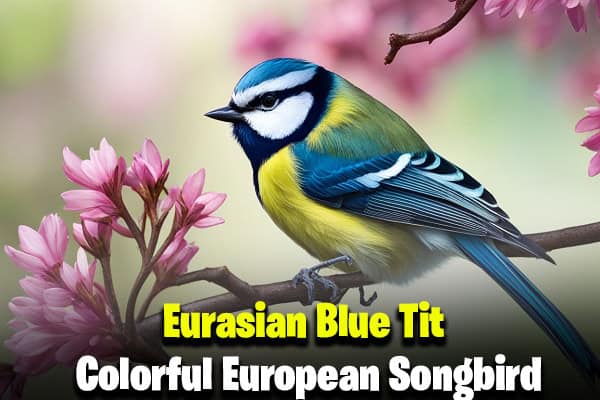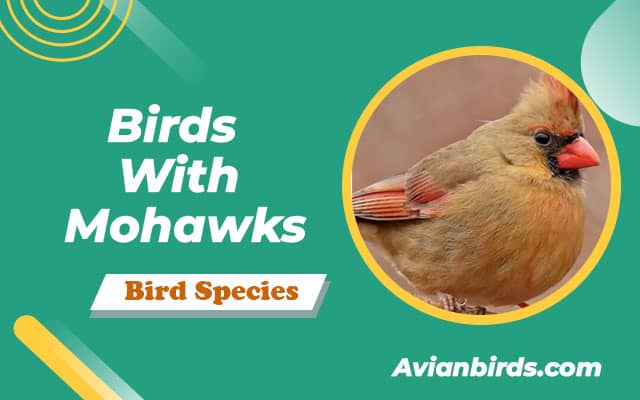Eurasian Blue Tit: Colorful European Songbird
Did you know the Eurasian blue tit has been seen in over 30 European countries? This bird is a joy to watch and important to many ecosystems. Its bright blue and yellow feathers make it a favorite among bird lovers and nature fans.
We’re going to dive into the world of the Eurasian blue tit. You’ll learn about its looks, where it lives, and how it acts. This bird is not just beautiful; it shows us the wonders of nature. Join us to discover more about this amazing songbird.
Introduction to the Eurasian Blue Tit
The Eurasian blue tit, known scientifically as Cyanistes caeruleus, is a key part of our natural world. It’s a European bird that stands out with its bright colors and smart ways. These birds love places full of trees, making them common in both the city and the countryside.
These birds are important for the environment. They help keep insect numbers down and spread seeds around. By learning more about the Eurasian blue tit, we’ll see how it lives, eats, and finds its home. This will help us understand its role in nature.
Learning about the Eurasian blue tit helps us see its value among European birds. It shows us why it’s crucial for our ecosystems.
Physical Characteristics of the Eurasian Blue Tit
The Eurasian blue tit is a songbird with bright colors and unique features. These traits make it a joy to watch and help us identify it. They also show how special these birds are.
Distinctive Plumage
Adults have a blue cap, white face, and a thin black line under their eyes. Their underparts are bright yellow, which looks great against their greenish tops. The blue wings and tail feathers add to their beauty.
Juveniles look similar but have paler yellow and less bright feathers. This color helps them attract mates and show they’re healthy during breeding.
Size and Shape Comparison with Other Birds
The Eurasian blue tit is quite small among songbirds. It’s about 4.5 to 5.5 inches long and weighs as much as a 2-euro coin. This size lets it move easily through the trees.
It’s smaller than the Great Tit, which looks bigger and more robust. This size difference helps the blue tit move quickly and find food in tight spots. It shows how well it can adapt to different places.
Habitat and Distribution
The Eurasian blue tit lives in many places, from forests to city parks and gardens. They are good at living near people, making them common in neighborhoods. They love deciduous woods because they find food and places to nest there.
These birds live in Europe and parts of Asia. They can live in many different places. You can find them in farmland, looking for insects and seeds to eat.
In cities, they’re becoming more visible, especially around bird feeders. This helps them survive in places full of food. It also helps them fit into our world better.
| Habitat Type | Description | Common Locations |
|---|---|---|
| Wooded Areas | Deciduous forests with ample foraging opportunities and nesting sites. | Central Europe, Mediterranean regions |
| Parks and Gardens | Urban areas featuring trees, shrubs, and bird feeders. | Across European cities |
| Farmland Hedgerows | Boundaries of agricultural fields providing shelter and food. | Rural areas in Europe |
Behavior and Feeding Habits
The Eurasian blue tit’s behavior and feeding habits are quite interesting. They show off their agility and cleverness. These birds are known for their amazing feeding skills. They can be seen flitting around in gardens, making them a joy to watch.
Acrobatic Foraging Techniques
Blue tits are famous for their agile moves. They hang upside down and flutter around leaves to find insects and larvae. These skills help them get food from hard-to-reach places.
They eat seeds, berries, and lots of insects. They change their diet based on what’s available.
Interactions with Bird Feeders
Blue tits are brave when it comes to bird feeders. They watch and learn from other birds to get food better. Sometimes, they compete with other birds for food, showing how smart and adaptable they are.
Bird feeders bring these birds to our gardens. They also help bird lovers connect, making our gardens fun places to watch birds together.
| Feeding Behavior | Insect Foraging | Social Behavior |
|---|---|---|
| Agile movement to access food | Active foragers in various habitats | Observational learning from peers |
| Utilizes tools to obtain seeds | Targets specific insects during seasons | Engages with multiple species at feeders |
| Frequent visits to gardens for food | Pairs with visual cues during foraging | Participates in communal feeding events |
Vocalizations and Communication
The Eurasian blue tit catches our eye with its bright colors and amazing sounds. These bird calls are key to their daily life. They help them talk to each other, warn of danger, or mark their territory.
Types of Calls and Their Meanings
When we watch the Eurasian blue tit, we hear many different calls. Each sound has a special meaning, helping us understand their behavior and social life. Here are some calls we can recognize:
- Alarm Calls: Harsh scolding calls often mean they’re upset or sensing danger. These calls tell other birds to be careful.
- Mating Calls: Soft, melodic sounds are used to find a mate. These calls show a blue tit is ready to pair up.
- Contact Calls: Blue tits use soft calls to stay in touch with friends. They make sure no one gets lost.
- Territorial Calls: Some calls mark their territory. This helps them keep their space safe from other blue tits.
Learning about these sounds helps us see how complex their communication is. By watching them, we learn about their social life and their place in nature.
Breeding and Nesting Habits
The Eurasian blue tit’s breeding behavior is very adaptable, especially with climate change. They breed from April to June. Warmer springs make them start nesting earlier.
Studies in Belgium show they nest 2-3 days earlier now than in 1979 to 2007. This shows how climate change affects their breeding success.
Breeding Season Changes Due to Climate Change
Climate change affects the Eurasian blue tit’s breeding habits. Early springs make them nest sooner. But, this can lead to less food for their young.
This change affects their breeding and how many times they can breed in a season.
Nesting Preferences and Use of Nest Boxes
Eurasian blue tits like to nest in tree cavities. They use feathers, moss, and plant material to build their homes. In cities, they also use nest boxes made by people.
These nest boxes help them breed better and support conservation. They help keep these colorful birds healthy and thriving.
Related Video:
| Aspect | Details |
|---|---|
| Breeding Season | April to June |
| Impact of Climate | Earlier nesting by 2-3 days |
| Nest Composition | Feathers and moss |
| Use of Artificial Nests | Increases chances of successful breeding |
| Conservation Impact | Supports local populations |
The Eurasian Blue Tit in Culture
The Eurasian blue tit captures our imagination with its vibrant colors and lively behavior. It has a big role in many cultural stories. It shows us joy and celebrates nature’s beauty.
In European folklore, the blue tit is a symbol of happiness. It stars in stories for children, showing off its fun behavior. This connects kids with nature. Artists and writers use the bird’s bright look to share messages about life and the environment.
The blue tit’s presence in our gardens and parks helps us connect with wildlife. It reminds us of the role of birds in our world. By loving this little songbird, we learn more about nature. This encourages future generations to value and enjoy the beauty around them.
Conservation and Environmental Impact
The Eurasian blue tit is not endangered but still faces many environmental challenges. Habitat loss, mainly due to urban growth and industrial projects, is a big threat. We can help by supporting conservation efforts to protect their homes and ensure they can live well.
Our conservation work is key to keeping populations stable. Projects like building nest boxes help with breeding. Getting local communities involved in bird-friendly actions is also important for protecting habitats.
Working together makes conservation efforts more effective. By joining forces with government groups, conservation organizations, and local people, we can tackle environmental issues better. Here’s how you can help:
- Join local birdwatching groups to get more people involved.
- Support groups that work on restoring habitats.
- Tell others why protecting habitats is important for local wildlife.
| Environmental Challenges | Conservation Solutions |
|---|---|
| Habitat Loss | Restoration efforts and protected areas |
| Climate Change | Monitoring populations and adjusting conservation strategies |
| Pollution | Awareness campaigns and community clean-up activities |
By working together, we can help the Eurasian blue tit and other wildlife. We can make a healthier place for these beautiful birds and many other species.
Check Our Previous Articles:
Final Thoughts
The Eurasian blue tit is more than its bright colors. It’s a key part of European ecosystems. By learning about its behaviors, habitats, and natural interactions, we see the beauty and complexity of birds.
This songbird touches our hearts and helps keep our environment balanced. Our focus on bird conservation is crucial, especially with threats like habitat loss and climate change. By teaching people to appreciate nature, we encourage them to protect these birds.
When we work together on conservation, we make sure the Eurasian blue tit stays with us. Every small action helps a lot. We can make our gardens bird-friendly or join local conservation projects. By doing this, we help keep the Eurasian blue tit’s song alive, deepening our bond with nature.







